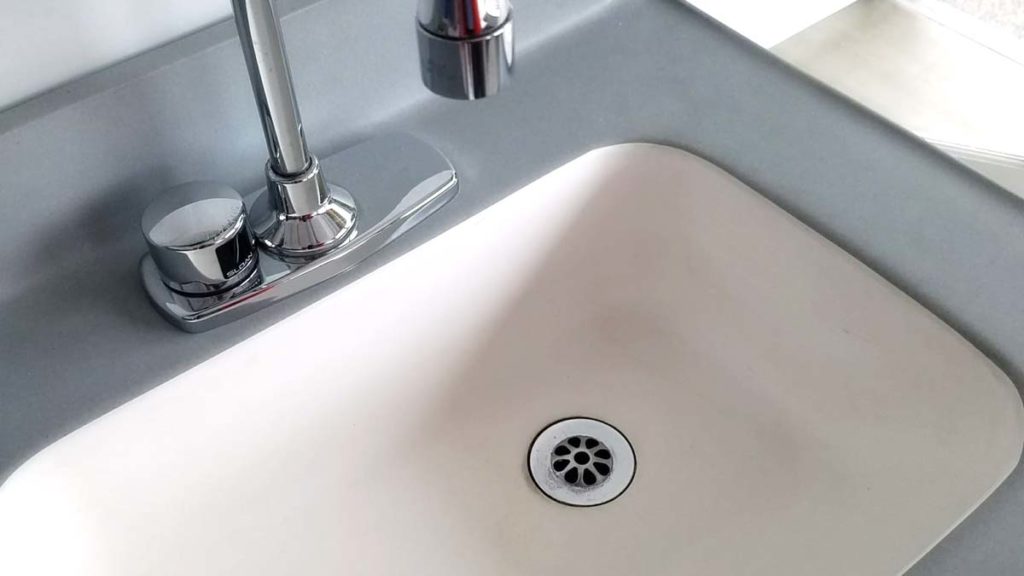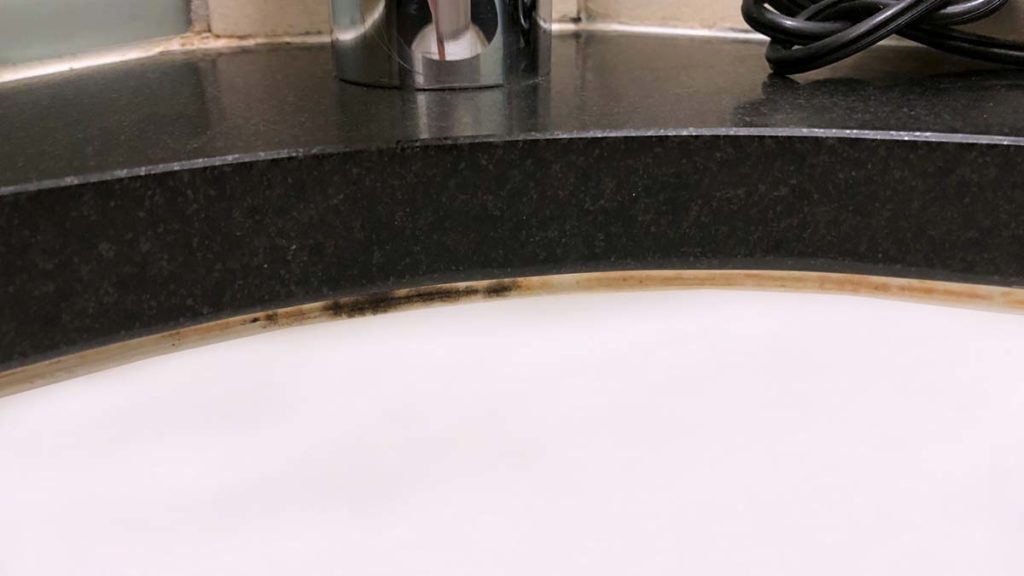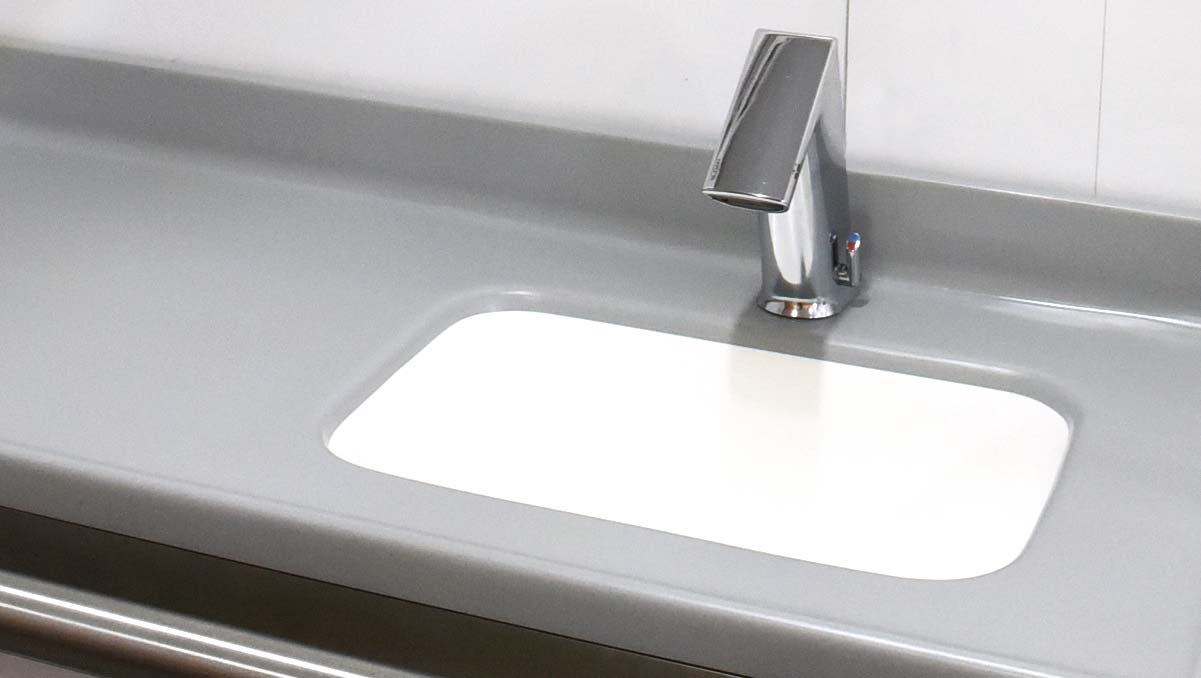
Many people think a sink is just a sink, but for hospitals, sinks play a vital role in infection control and prevention.
Hospital-Acquired Infections, or as they are sometimes called, Healthcare-Associated Infections (HAIs) are a devastating and costly problem for hospitals.
From December 2004 through March 2006, 36 transplant patients at Toronto General Hospital were either infected or colonized with Pseudomonas aeruginosa. Of those 36 patients infected, five were killed by the outbreak itself, while it was considered a contributing factor in the deaths of seven others.
Pseudomonas bacteria thrive in drains where it forms a biofilm—a thin, slimy film of bacteria that adheres to surfaces. The hospital infection control specialists knew this, so that’s where they began the search for the cause of the outbreak.
In a report in Toronto’s Globe and Mail Dr. Gardam, head of infection control for the University Health Network said, “It was really only when we said: ‘Okay, we’re going to test every single bloody sink multiple times’ that we started finding it in some of the sinks. It was never in all of the sinks. It was only ever in some of the sinks.”
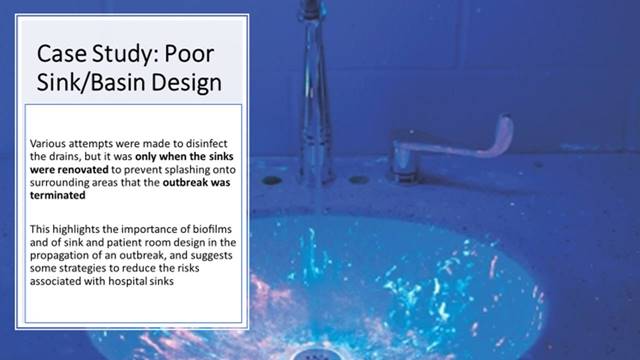
The problem was traced to poor sink design. The sinks in affected rooms featured a high gooseneck faucet, shallow basin, and a center drain that allowed water—and therefore bacteria—to easily splash out and contaminate surrounding surfaces.
“The message from this for us was that hand hygiene sinks are obviously really important—and they have to be the right design. And they have to be in the right place. And they can’t be splashing,” said Gardam in the Globe and Mail report.
Dr. Gardam and his team felt the issue was so important they published their findings in the SHEA journal Infection Control & Hospital Epidemiology so other healthcare organizations could learn from their experience. You can access the full report here.
Reduce the Risk of HAIs Through Better Sink Design
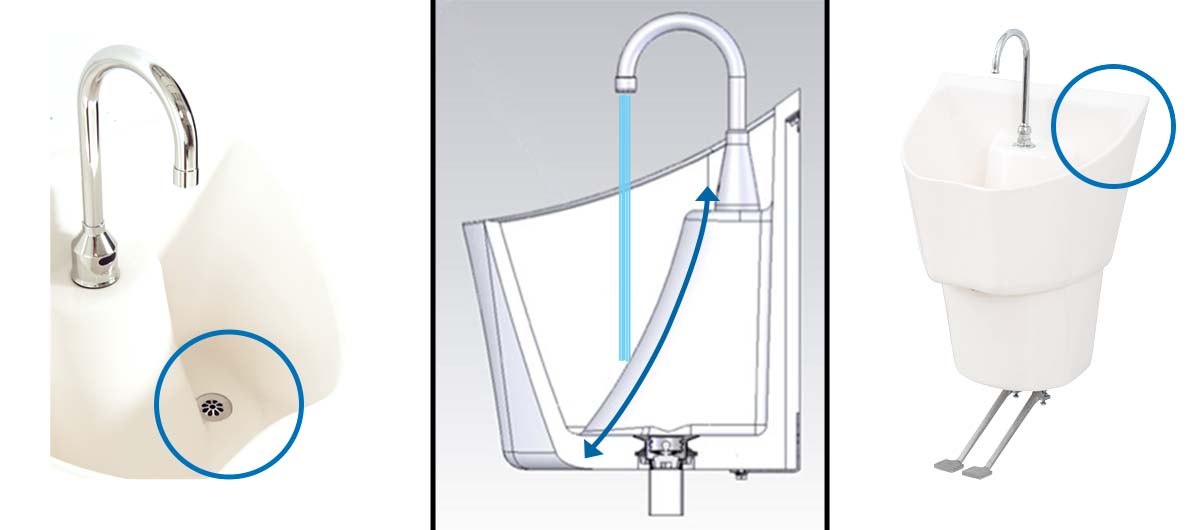
Preventing infection is something we take very seriously here at Whitehall Manufacturing—so much so that it is one of the main factors we consider when designing our hospital sinks.
From using sloped interiors to reducing surrounding counter space, no detail is too small to take into account. For example, the off-center drain is often glossed over when specifying new sinks, but it is a critical feature for reducing the spread of HAIs.
Features of Whitehall’s Infection Prevention Sink
- A deep basin allows for optimal washing of hands and lower arms while helping to keep the water in and the surrounding areas dry.
- The sloped interior and offset drain diffuse the flow of water to further minimize splashing.
- The absence of counter space discourages users from placing objects on or near the sink that may accumulate standing water and attract bacteria.
- A completely seamless solid surface construction eliminates the nooks and crannies where mold can grow unnoticed.
- SteriTouch® antimicrobial treatment adds an extra layer of protection, reducing growth of mold and bacteria.
- ADA/OBC-compliant models are available.
Most countertops available on the market are manufactured with multiple seams, particularly where the sink connects to the countertop. Whitehall manufactures durable, non-porous solid surface material that is seamless throughout and, unlike competitors, can also be adhered seamlessly to stainless steel, eliminating the cracks and crevices where bacteria and mold grow. Because we make these countertops in our factory, our solid surface material can be cast into any size and shape you might need.
The next time you find yourself specifying sinks for your healthcare facility, remember Toronto General Hospital and look carefully at the features of the sinks you are considering. Will they help prevent infections, or will they be the source of an outbreak?
